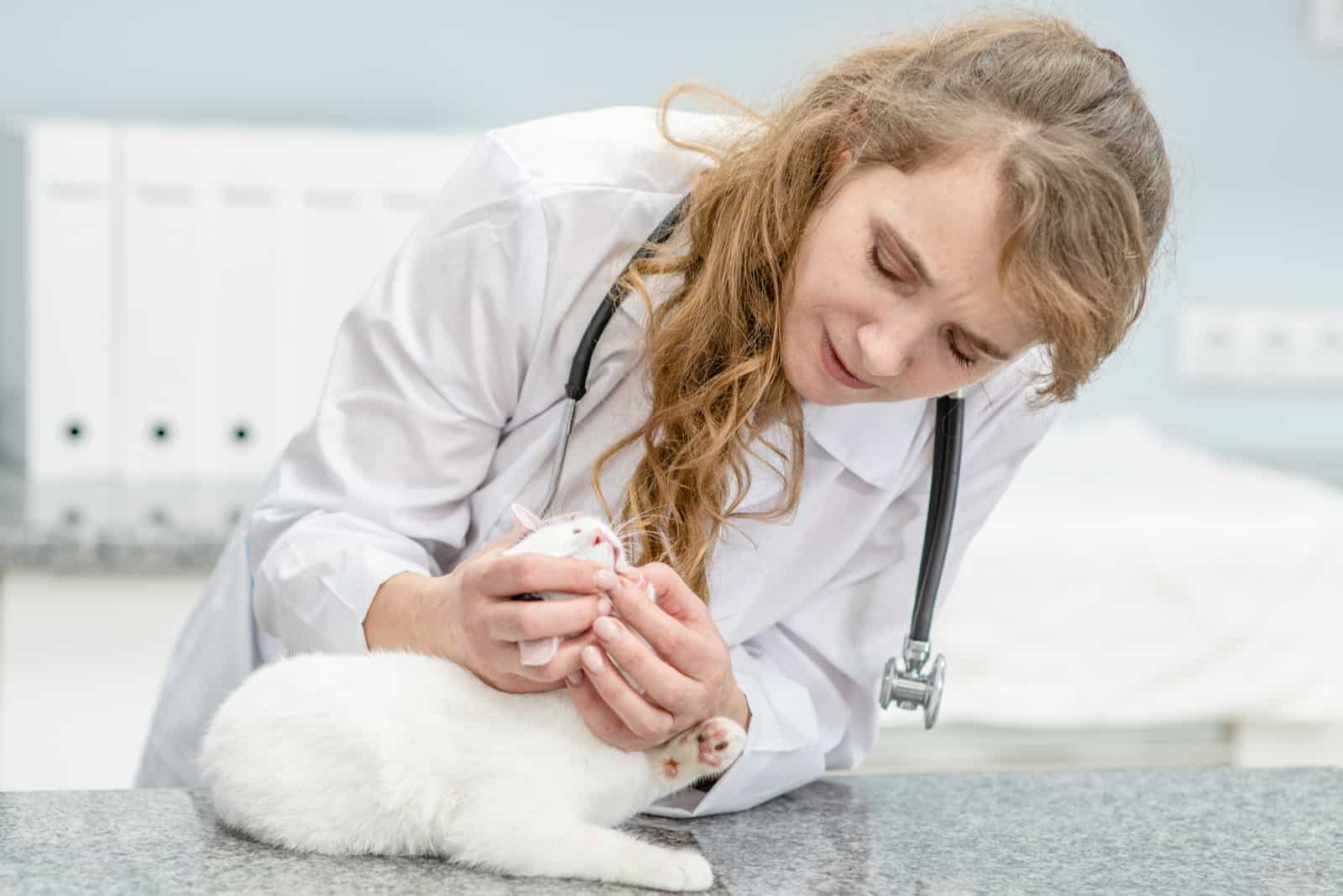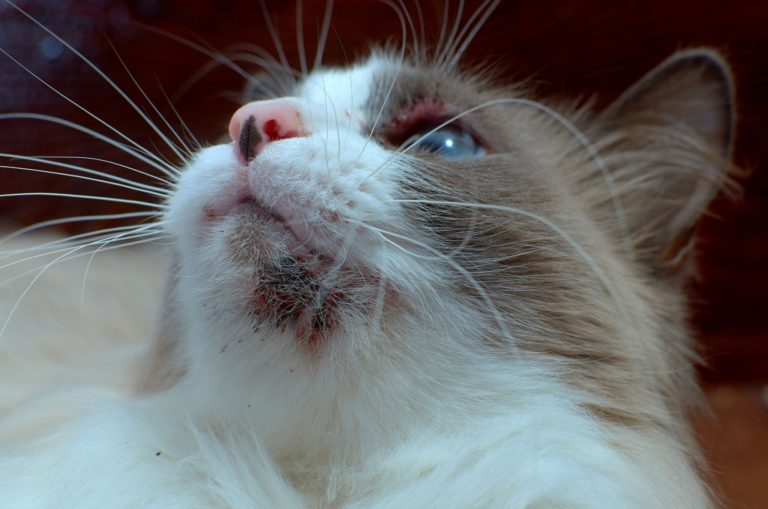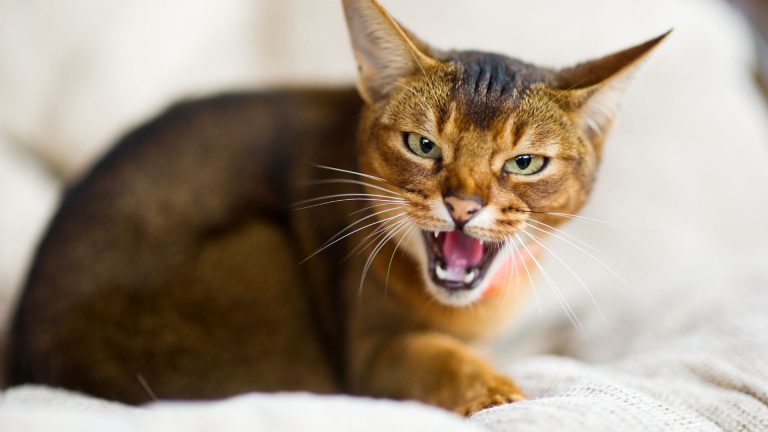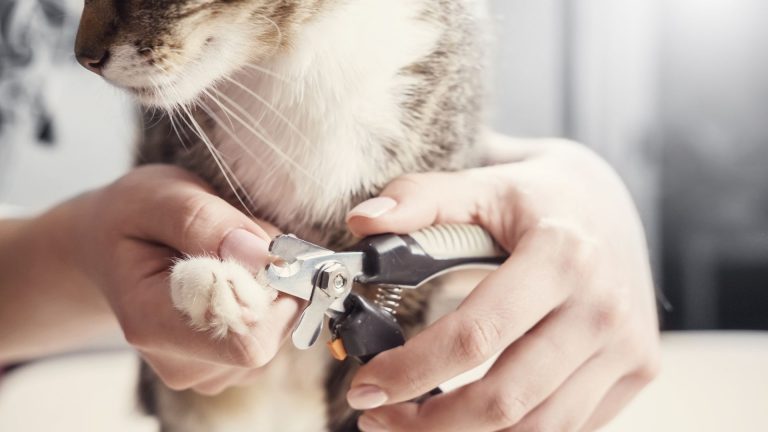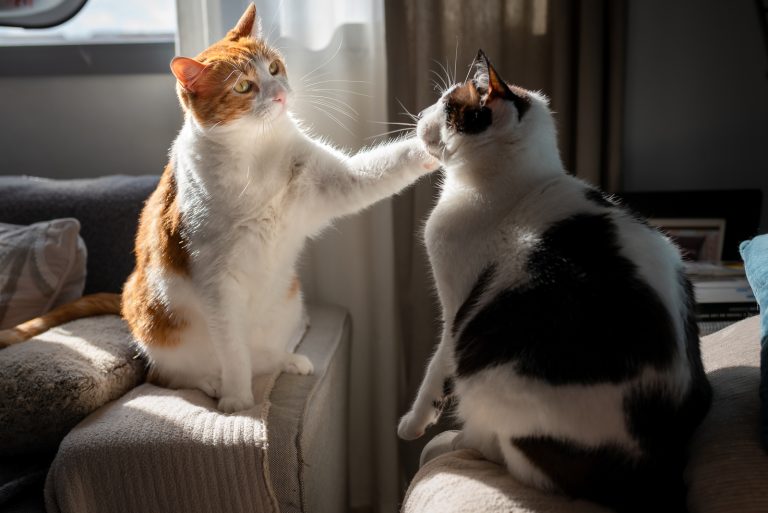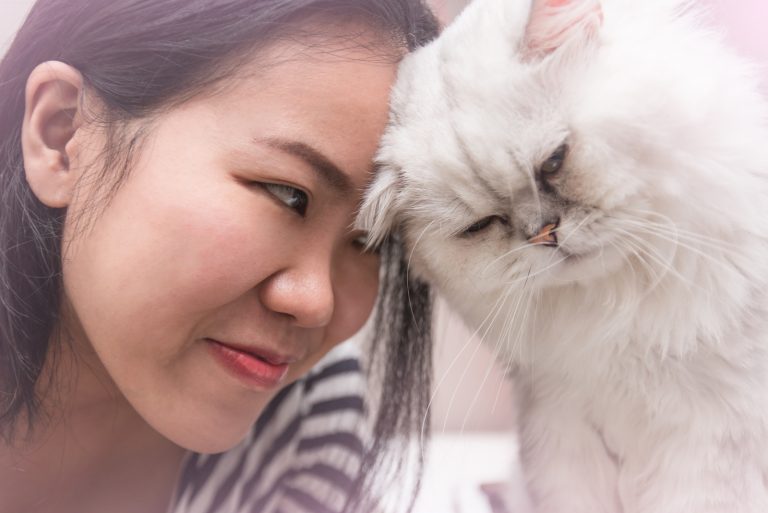Putting A Cat Down With Stomatitis: What You Should Know

I know how hard it is having a kitty with stomatitis. I had a cat with this disease when I was younger, and I remember how sad and frustrated my parents were as they attempted to make our cat feel better.
Stomatitis is a chronic inflammation of the soft tissues of a cat’s mouth. For most cats, this disease causes a lot of pain, to the point that the cat will refuse to eat to avoid more discomfort.
There are a few treatment options, such as dental cleaning, pain relief, and extraction of most or all of the cat’s teeth. Full mouth extraction of all teeth gives the best results. However, in some cases,not even this treatment helps.
Owners of cats with stomatitis know how damaging it is to the quality of life of affected cats. Putting a cat down with stomatitis might seem like the kindest option, but it is definitely not an easy choice to make.
Continue reading to find out all about feline stomatitis, what are the treatment options, how to recognise the signs that your cat’s quality of life has deteriorated and how the process of feline euthanasia goes.
Putting A Cat Down With Stomatitis: A Hard Choice To Make
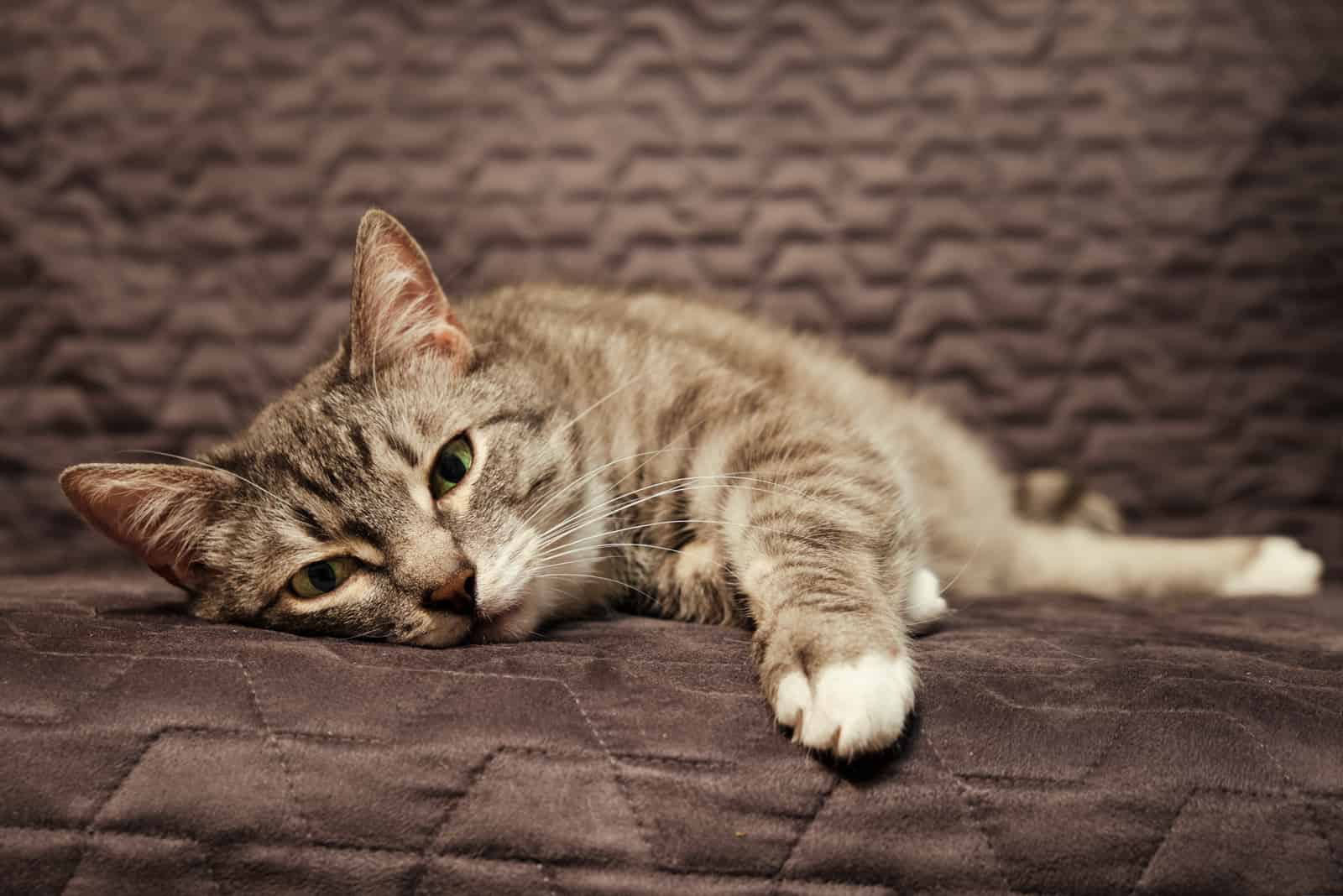
Should cats with stomatitis be euthanized? It’s a difficult question to answer. I know how difficult it is for a pet owner to see their pet suffer… I also know how hard it is for pet owners to say goodbye to their beloved cat.
The single most important question you have to answer truthfully is: Have you exhausted all possible treatment options?
For example, let’s say a cat with stomatitis is suffering a lot because of the constant pain inflicted by this disease. Does this mean putting them to sleep is the best option? No, because there is a possible treatment option; teeth extraction (removal of all teeth) is known to be very successful in treating stomatitis.
Now answer this: Have you tried teeth extraction as a treatment for your pet?
It’s important to say that this treatment option is not 100% efficient… It works well for more than 2/3 of cats with stomatitis, but not all of them. There is still a possibility that the cat will continue suffering from this disease.
At the end of the day, it comes down to answering one question: Is your kitty suffering too much, to the point that their quality of life has deteriorated?
This just might be the hardest question you’ll even have to answer when it comes to having any type of pet, but it’s the one you have to be really honest about.
If you’re thinking about putting a cat with stomatitis down, please continue reading in order to make sure you understand everything about this disease, how it affects your pet, what your treatment options are, and when it comes to the end – what feline euthanasia looks like and when it should be performed.
Feline Stomatitis: Everything You Need To Know
Feline stomatitis is one of several common feline dental diseases.
If you have a cat suffering from stomatitis, it’s crucial you find out everything you can about this disease. It’s very easy to find information about any feline disease today, so make sure to educate yourself about your pet’s disease as much as you can. In that way, you’ll know how to help your cat in the best way possible.
Now, let’s go over the things you must know about this unfortunate feline disease.
What Is Stomatitis?
This is a very painful and complex chronic disease that affects the mouth tissues of an affected cat. Stomatitis is characterized by a severe inflammation of:
🐾 gums
🐾 tongue
🐾 inner surface of the lips
🐾 floor and roof of the mouth
The inflammation that accompanies cat stomatitis can be:
🐾 localized – meaning it affects only one area of the cat’s mouth
🐾 widespread – meaning it affects the cat’s entire mouth
Among veterinary dentists, cat stomatitis is also known as feline chronic gingivo-stomatitis (FCGS).
This is very different from gingivitis, which is an inflammation of the gums only. Many people confuse the two, but they are different. Also, some might associate stomatitis with a stomach issue (which is understandable considering the name of the disease), but as you see, stomatitis has nothing to do with a cat’ stomach, but rather the cat’s mouth.
What Are The Symptoms Of Stomatitis?
Symptoms of stomatitis in cats are the same for almost all cats, so they are universal indicators of a cat with feline stomatitis.
Common symptoms observed in cats with stomatitis are:
🐾 Bad breath
🐾 Drooling
🐾 Red and inflamed gums
🐾 Presence of ulcers and lesions (painful sores)
🐾 Cat not grooming itself as much as before
🐾 Food falling out of the cat’s mouth while eating
🐾 Not eating as much as before
🐾 Weight loss
🐾 Change in general behavior and mood
These symptoms are easy to notice, no matter how good the cat might be at hiding pain (and it’s well known cats are great at this).
Unfortunately, the pain caused by this disease might get so bad that the cat can no longer hide it.
Which Cats Are More Susceptible To Stomatitis?
It has been observed that senior cats are much more likely to suffer from stomatitis. That is not to say that only old cats suffer from this health issue. Younger cats have been observed with this disease too!
The vast majority of cats with stomatitis are over a year old.
Feline stomatitis can affect any cat, although older cats and some purebreds, such as Siamese, Persian, and Abyssinians, may be more susceptible to stomatitis than others.
Cats with diabetes or kidney disease are also more vulnerable to feline stomatitis. It is also more common in cats who have feline calicivirus, feline immunodeficiency virus (FIV), or feline leukemia virus (FeLV).
How Is Stomatitis Diagnosed?
Stomatitis is diagnosed by performing an in-depth oral exam.
The three characteristics of feline stomatitis are:
🐾 Severe inflammation of the gums
🐾 Severe inflammation of the inside of the cheeks
🐾 Severe inflammation of the back of the cat’s mouth
Many cats also experience tooth resorption alongside stomatitis. Tooth resorption is a condition in which the cat’s body breaks down and absorbs the diseased teeth.
If the vet observes the above mentioned symptoms, they might diagnose stomatitis, but not before performing a couple of additional tests first…
A vet can order the following:
🐾 Blood test
🐾 Urine test
🐾 Oral biopsy
🐾 Test for feline leukemia virus
🐾 Test for feline immunodeficiency virus
🐾 X rays
Your cat’s blood work and urinalysis will show if your cat has some underlying condition, such as kidney disease or liver disease.
Tests for feline leukemia virus and feline immunodeficiency virus are crucial as there are links between two viruses and stomatitis.
A biopsy (taking a tissue sample) is done in order to analyze the tissue in depth. It is performed so that the vet can be certain of their diagnosis and rule out any other possible conditions, such as squamous cell carcinoma.
Dental x rays are also highly recommended in order to check for periodontal disease or tooth root resorption.
What Causes Stomatitis?
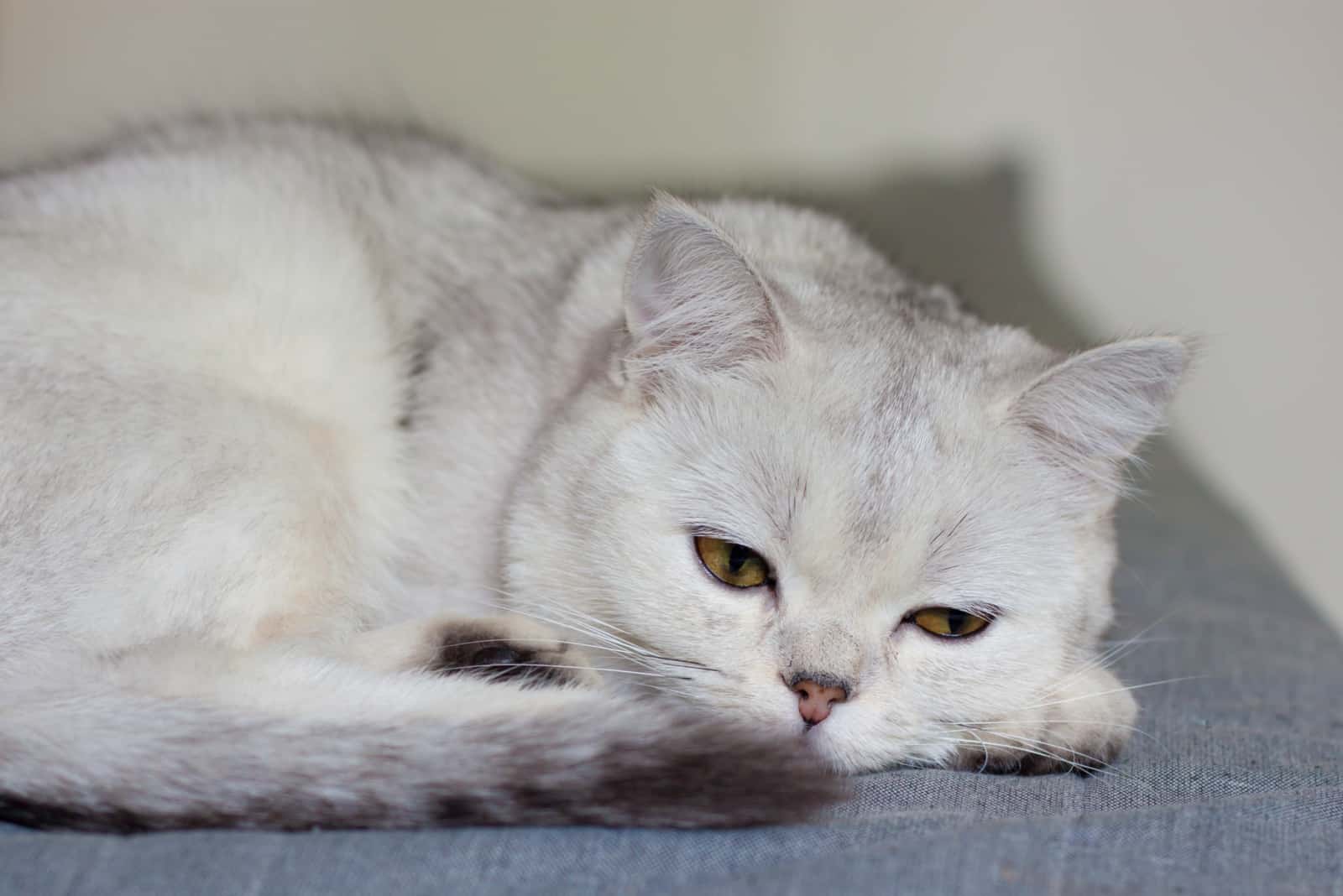
The exact cause of feline stomatitis is still unknown.
The most likely explanation is that the cat’s immune system overreacts to the bacteria in the cat’s mouth. It is not known why this might happen. Bacteria are a normal part of the mouth microflora and a healthy cat’s immune system should not react to them.
Essentially, sometimes a cat’s immune system overreacts to its own mouth plaque (most commonly found on teeth).
It is known that cats with Feline Calicivirus, Feline Immunodeficiency Virus (FIV) or Feline Leukemia Virus (FeLV) are more likely to suffer from stomatitis. The exact correlation between stomatitis and these viruses is still unknown.
It has been observed that cats that live in large groups, are outdoor cats, or part of a multi-cat household are more likely to suffer from stomatitis. Again, the reason for this correlation is unknown.
How Painful Is Feline Stomatitis?
Feline stomatitis is known for causing a great deal of pain to any cat that suffers from it. This is because this disease is a chronic, severe inflammation of the entire mouth. It is a lot more painful than gingivitis, which is an inflammation of the gums only.
Some cats are lucky enough that this disease does not bring so much pain and they can live a fairly normal life without pain meds, but others are not.
As you may conclude, simple daily tasks such as eating and grooming become painful to the point the affected cats may stop doing them in order to prevent feeling too much pain.
A cat with stomatitis will have more problems with dry food, as dry food requires a lot of chewing. Wet cat food is the best choice for cats with this disease.
How Long Can A Cat Live With Stomatitis?
A cat with stomatitis will not lose any years from their life expectancy. Affected cats can go on to live for a really long time, just like healthy cats do. Feline stomatitis will cause pain for your cat, but it will not make their life shorter.
Is Stomatitis In Cats Fatal?
Feline stomatitis can definitely be fatal. If a cat suffering from stomatitis stops eating completely, that will lead to starvation and eventual death. Of course, this is extremely rare, as cat owners usually make sure their cats get proper treatment on time.
Stomatitis being deadly is not something you need to worry about if you take your cat to the vet when you notice symptoms.
What Is The Treatment For Stomatitis?
Unfortunately, there aren’t a lot of treatment options for stomatitis. You can choose between:
🐾 A short-term solution – dental cleaning and pain relief.
🐾 A long-term solution – teeth extraction.
Dental Cleaning
When it comes to teeth cleaning, all plaque and tartar build-up on the teeth must first be removed, both above and below the gum line. The only way to do this is under anesthetic. Antibiotics and anti-inflammatory drugs may be administered to the cat, although they typically only provide short-term pain relief.
Teeth Extraction
Most veterinary doctors turn to full mouth extraction of all the cat’s teeth. This is done because the cat’s immune system is overreacting to any plaque build-up on the teeth. So, if you remove the trigger that the cat’s immune system is attacking (the plaque/teeth), the immune system will stop overreacting and this should end the cat’s pain.
Many vets try not to take out all of the cat’s teeth but instead leave the canine teeth (the fangs). In many cases, they will need to be removed later on as well.
Cats also need to take antibiotics in order to stop oral infections after teeth extractions. Pain relief medication is almost always prescribed as well.
Does Teeth Extraction Always Help?
The procedure with the highest success rates at the moment is extraction of all teeth impacted by periodontal disease, tooth resorption, or inflammation.
Flare-ups may still occur even after all the teeth have been removed because of plaque buildup on the tongue and roof of the mouth.
A study of the effect of tooth extraction on stomatitis showed that the majority of cats get better after teeth extraction. The key phrase here is the majority. Teeth extraction is not 100% successful for all cats with stomatitis.
Pain Relief
Cats with severe forms of stomatitis are often prescribed pain meds, even if they don’t have the teeth removal procedure. This is understandable, considering how much the pain affects their day-to-day activities.
Laser Therapy
Another treatment option is laser therapy. Essentially, a laser beam is pointed at the cat’s mouth with the goal of killing all the bacteria that cause the cat’s immune reaction and chronic inflammation.
There have been mixed experiences of this treatment option, so if you’re interested in it, I suggest you ask your vet about the details and get their professional advice.
Is There A Cure For Stomatitis?
A cure for cat stomatitis has not yet been found. This is because the exact cause of cat stomatitis is not known. There is a likely theory on the cause of stomatitis (the cat’s immune system attacking the bacteria in the cat’s mouth), and a treatment option with the highest success rate (tooth extraction).
How Can Stomatitis Be Prevented?
The best prevention strategy is to practice good dental hygiene, beginning when your cat is young. Good dental care will not stop stomatitis from developing in 100% of cases, but it’s your best chance of avoiding it.
Additionally, keeping your cat’s vaccines up to date will lower their risk of contracting feline calicivirus or feline leukemia virus. It’s a good idea to neuter your cat to decrease the likelihood of cat fights and, consequently, reduce the risk that your pet will contract FeLV or FIV.
I am mentioning this because it’s been observed that cats that have one or both of these viruses have a higher chance of having stomatitis too.
When Should Putting A Cat Down Be Considered?

To give you a short answer: putting a cat down should be considered only when their quality of life has become really bad. If the cat is only suffering and not enjoying even the smallest things that used to make them happy, it might be time.
There are couple of tale-tell signs that a cat has a very poor quality of life, such as:
🐾 Lack of interest in eating
🐾 Lack of interest in drinking
🐾 Change in personality
🐾 Change in appearance
🐾 Weight loss
🐾 Weakness
🐾 Seeking solitude and hiding
🐾 Not being as active as before
🐾 Not wanting to go outside
🐾 Avoiding physical contact
🐾 Disorientation
🐾 Crying
🐾 Sleeping more than usual
Please read these signs of poor life-quality in a pet cat, and consider how many of these signs your pet exhibits.
Keep in mind that cats are masters of hiding pain. In the majority of cases, your cat is feeling much more pain than they’re showing. It’s simply their instinct to hide the pain, as it is considered a weakness in the wild.
What Is Feline Euthanasia?
The act of putting an animal to death humanely is known as euthanasia. As veterinarians and as individuals, it is our duty to make sure that, if an animal’s life must be ended, it is done so with the utmost care and with a focus on minimizing pain and distress.
If we are in a position to do something to alleviate an animal’s suffering, it is both a blessing and a curse. It’s a blessing to put the animal out of their misery, but a curse that we have to make that choice.
When Is It Time To Say Goodbye?
We all want to prevent our cats from suffering as much as we can, and in cases where a cat is gravely ill and in agony and we have exhausted all other options for therapy, the euthanasia option might be the right choice.
The cat may have a persistent, progressive illness for which no treatments are effective. Or perhaps the treatments that are available carry a ton of side effects.
I know it’s not an easy topic, but putting your cat to sleep might be an act of mercy. It’s never easy to see a cherished animal pass away. The loss is always accompanied by feelings of sadness, emptiness, regret, anger, confusion, and grief. Remember to give yourself space to mourn.
At the end of the day, your beloved pet is not suffering anymore and that’s the most important thing. You will be okay after some time and you’ll always have great memories with your kitty to think of!
How Is Euthanasia Performed?
A barbiturate anesthetic is used in the procedure to cause loss of consciousness and death without the cat experiencing any pain, anguish, or anxiety.
The cat’s heartbeat will immediately begin to slow and eventually stop due to a drug overdose. The cat will stop breathing, its blood circulation will halt, and its brain will stop working. The cat will slip away painlessly and gently in a matter of seconds.
Before administering the deadly injection, some veterinarians may give the cat a mild sedative.
In Conclusion
Every pet owner’s priority is their pet’s health. If your pet’s health is compromised, I know how difficult it can be for the entire household.
Feline stomatitis is an inflammation of the soft tissues of a cat’s mouth, characterized by a great deal of oral pain that the affected cats unfortunately experience. It is mostly observed in old cats, but younger cats can be affected too. Stomatitis can affect any cat, regardless of age, gender, or breed. However, Siamese, Abyssinians, Persians, Himalayan, and Burmese cats appear to experience more severe symptoms.
In some cases, putting a cat down with stomatitis is a good option. If the affected cat has stopped responding to treatment and is constantly suffering to the point that her quality of life has deteriorated, feline euthanasia should be considered.
Before making that final decision, please make sure you consult with your vet and ask for his opinion. You must exhaust every treatment option before putting your pet to sleep, so educating yourself about your cat’s disease is crucial!
I hope this article has helped you understand this condition and make the right decision if you have been considering putting your cat to sleep. It is so important that you are armed with all the information you need to know to make that decision. Whether you decide to keep on fighting or put your cat to sleep, I’m sure you’ll make the best choice possible for your situation!
Related Articles
Feline Lymphoma: When To Euthanize – Everything You Should Know
Cat With FIP When To Euthanize: Helping You Make A Decision
When To Euthanize A Cat With IBD – Everything You Should Know

